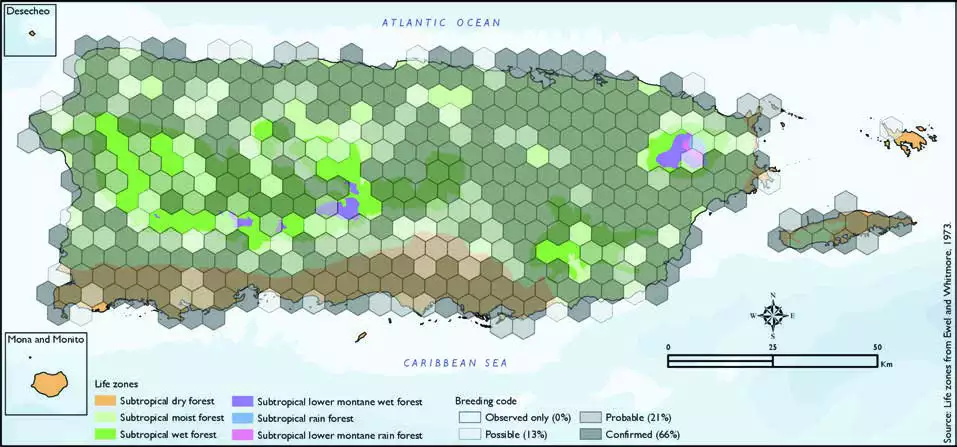Greater Antillean Grackle
Description
The Greater Antillean grackle (Quiscalus niger) is a grackle found throughout the Greater Antilles as well as smaller, nearby islands. Like all Quiscalus grackles, it is a rather large, gregarious bird. It lives largely in heavily settled areas. It is also known as the 'kling-kling' and 'chinchilín' in the Dominican Republic, and as a ‘chango’ in Puerto Rico.
The 27 cm (11 in)-long male is glossy black with a large rudder-like tail; the 24 cm (9.4 in)-long female has a smaller tail and is similar in color, but less glossy than the male. The eye is yellow and is the only non-black body part.
The Greater Antillean grackle is a generalist eater; it eats fruits, bread, plant matter, and both small vertebrates and invertebrates alike.
Distribution & Habitat
The Greater Antillean Grackle occurs in the Greater Antillean
islands of Cuba, Jamaica,
Hispaniola, and Puerto Rico
(Jaramillo and Burke 1999,
Raffaele and others 1998). It
is a very common resident in
Puerto Rico, including Vieques
(Gemmill 2015) and Culebra. The
Greater Antillean Grackle occurs
mostly in lowlands and open
areas including mangrove forest
edges, pastures (Raffaele and
others 1998), farms, and towns,
but it avoids deep forests (Oberle
2018). The atlas fieldwork
yielded a total of 955 records
within 394 hexagons or 82 percent of the 479 total hexagons
(see map). Of the 394 hexagons
where this species was found,
breeding met the atlas definition
of confirmed in 66 percent (261)
of the hexagons, probable in
21 percent (81), and possible in
13 percent (52) (see map). Greater Antillean Grackle distribution. The map shows the highest breeding code by hexagon and overlaying the ecological life
zones in Puerto Rico. Note: percentages may not total 100 due to rounding.

Breeding Habits
This species builds a nest made of grass and sticks (Oberle
2018), and breeds from February
to September, with most
breeding activity from April to
August, according to previously
published reports (Raffaele
and others 1998). However,
atlas results indicate that this 271Greater Antillean Grackle/Mozambiquespecies breeding season extends throughout the year, but it is
most active from March to June
(see chart). Results show that the
Greater Antillean Grackle breeds
within all ecological life zones
but mostly within the subtropical
moist forest life zone (64 percent
of the hexagons) (see table
and map).
Conservation
The Greater Antillean Grackle has a stable population within
its distribution range, and it
is listed as a species of least
concern by the IUCN (BirdLife
International 2018). Locally, this
species is very common and
not listed under any threatened
categories of PRDNER or USFWS.
In Puerto Rico, the Greater Antillean Grackle has a protected
habitat in land of 11 percent
or 1078 km2 of the total area covered by the hexagons where
evidence of breeding was found
for this species (9398 km2). Note this area is larger than the
total terrestrial area of the island
because coastal hexagons and
those hexagons covering small
cays include a portion of water.
Related Species
Family:
icterids